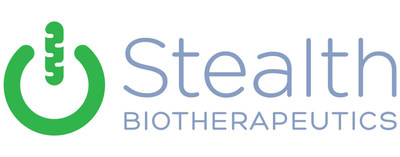Stealth BioTherapeutics Presents Positive SBT-272 Preclinical Data at 2021 Annual Northeast Amyotrophic Lateral Sclerosis (NEALS) Meeting
Stealth BioTherapeutics Corp (Nasdaq: MITO) presented promising data on SBT-272 at the 2021 NEALS Meeting. The study evaluated its effects on mitochondrial function in a murine model of ALS, revealing that SBT-272 crosses the blood-brain barrier and mitigates ischemic stress. The preclinical results showed improved mitochondrial motility and morphology, which correlated with enhanced axon outgrowth in neurons. CEO Reenie McCarthy expressed optimism about advancing SBT-272 towards Phase 1 clinical studies in the coming year, further supporting its potential as a therapy for neurodegenerative diseases.
- Promising preclinical data on SBT-272 for treating ALS.
- SBT-272 crosses the blood-brain barrier and demonstrates mitoprotective effects.
- Improved mitochondrial motility and ultrastructure in treated neurons.
- Plans to advance SBT-272 into dose-ranging Phase 1 clinical studies.
- None.
Insights
Analyzing...
BOSTON, Oct. 7, 2021 /PRNewswire/ -- Stealth BioTherapeutics Corp (Nasdaq: MITO), a clinical-stage biotechnology company focused on the discovery, development and commercialization of novel therapies for diseases involving mitochondrial dysfunction, announced today the presentation of new promising data from a study evaluating the effects of SBT-272 in a murine model of amyotrophic lateral sclerosis (ALS). The data were presented at the virtual 2021 Annual Northeast Amyotrophic Lateral Sclerosis (NEALS) Meeting held October 6-7, 2021.
Mitochondrial dysfunction, including reduced mitochondrial length and density in primary motor neuron neurites, is known to be one of the earliest pathophysiological events in ALS, including familial ALS associated with mutations in TAR DNA-binding protein 43 (TDP-43). TDP-43 pathology has also been observed in multiple other neurodegenerative diseases, including frontotemporal lobar degeneration (FTLD), Lewy body dementia (LBD), progressive supranuclear palsy (PSP), and Alzheimer's disease. SBT-272 is a novel, clinical-stage mitochondria-targeted product candidate which is known to cross the blood-brain barrier, with the potential to treat neuronal mitochondrial dysfunction.
This preclinical study evaluated the effects of SBT-272 on mitochondrial function, morphology, and motility in mouse corticospinal motor neurons with mutant TDP-43 pathology. Systemic administration of SBT-272 in rodents resulted in sustained SBT-272 levels across different regions of the brain and protected mitochondria against ischemic stress, confirming that the compound crosses the blood brain barrier and has mitoprotective effects. Mitochondrial motility, which was significantly impaired in TDP-43 upper motor neuron cultures, was improved in a dose-dependent manner with SBT-272 treatment. Mitochondrial ultrastructural defects associated with TDP-43 pathology were also reduced with SBT-272 treatment. The improved mitochondrial motility and ultrastructure were associated with improved axon outgrowth in cultured mutant TDP-43 neurons treated with SBT-272. These data highlight the potential of SBT-272 as a systemically administered therapy for treating neurodegenerative diseases.
"We are excited about the promise of SBT-272 as a potential therapeutic for neurodegenerative diseases including ALS," said Chief Executive Officer Reenie McCarthy. "These encouraging data add to our growing body of evidence in other preclinical models of ALS, Parkinson's disease, and other neurodegenerative disorders, providing early therapeutic direction as we plan to advance SBT-272 in dose-ranging Phase 1 clinical studies early next year."
About Stealth
We are a clinical-stage biotechnology company focused on the discovery, development, and commercialization of novel therapies for diseases involving mitochondrial dysfunction. Mitochondria, found in nearly every cell in the body, are the body's main source of energy production and are critical for normal organ function. Dysfunctional mitochondria characterize a number of rare genetic diseases and are involved in many common age-related diseases, typically involving organ systems with high energy demands such as the heart, the eye, and the brain. We believe our lead product candidate, elamipretide, has the potential to treat both rare metabolic cardiomyopathies, such as Barth syndrome, Duchenne muscular dystrophy and Friedreich's ataxia, rare mitochondrial diseases entailing nuclear DNA mutations, as well as ophthalmic diseases entailing mitochondrial dysfunction, such as dry age-related macular degeneration and Leber's hereditary optic neuropathy. We are evaluating our second-generation clinical-stage candidate, SBT-272, and our new series of small molecules, SBT-550, for rare neurological disease indications following promising preclinical data. We have optimized our discovery platform to identify novel mitochondria-targeted compounds which may be nominated as therapeutic product candidates or utilized as mitochondria-targeted vectors to deliver other compounds to mitochondria.
Forward-looking Statements
This press release contains forward-looking statements within the meaning of The Private Securities Litigation Reform Act of 1995. Such forward-looking statements include, but are not limited to, those regarding the implications of preliminary preclinical data. Statements that are not historical facts, including statements about Stealth BioTherapeutics' beliefs, plans and expectations, are forward-looking statements. The words "anticipate," "expect," "hope," "plan," "potential," "possible," "will," "believe," "estimate," "intend," "may," "predict," "project," "would" and similar expressions are intended to identify forward-looking statements, although not all forward-looking statements contain these identifying words. Stealth BioTherapeutics may not actually achieve the plans, intentions or expectations disclosed in these forward-looking statements, and you should not place undue reliance on these forward-looking statements. Actual results or events could differ materially from the plans, intentions and expectations disclosed in the forward-looking statements as a result of known and unknown risks, uncertainties and other important factors, including: Stealth BioTherapeutics' ability to obtain additional funding and to continue as a going concern; the impact of the COVID-19 pandemic; the ability to successfully demonstrate the efficacy and safety of Stealth BioTherapeutics' product candidates and future product candidates; the preclinical and clinical results for Stealth BioTherapeutics' product candidates, which may not support further development and marketing approval; investigational review boards at clinical trial sites and publication review bodies, which may affect the initiation, timing and progress of preclinical studies and clinical trials of Stealth BioTherapeutics product candidates; Stealth BioTherapeutics' ability to obtain and maintain requisite regulatory approvals and to enroll patients in its planned clinical trials; unplanned cash requirements and expenditures; competitive factors; and general economic and market conditions. These and other risks which are described in greater detail under the caption "Risk Factors" included in the Stealth BioTherapeutics' most recent Annual Report on Form 20-F filed with the Securities and Exchange Commission ("SEC"), as well as in any future filings with the SEC. Forward-looking statements represent management's current expectations and are inherently uncertain. Except as required by law, Stealth BioTherapeutics does not undertake any obligation to update forward-looking statements made by us to reflect subsequent events or circumstances.
Investor Relations
Stern Investor Relations
Janhavi Mohite, 212-362-1200
IR@StealthBT.com
![]() View original content to download multimedia:https://www.prnewswire.com/news-releases/stealth-biotherapeutics-presents-positive-sbt-272-preclinical-data-at-2021-annual-northeast-amyotrophic-lateral-sclerosis-neals-meeting-301395580.html
View original content to download multimedia:https://www.prnewswire.com/news-releases/stealth-biotherapeutics-presents-positive-sbt-272-preclinical-data-at-2021-annual-northeast-amyotrophic-lateral-sclerosis-neals-meeting-301395580.html
SOURCE Stealth BioTherapeutics Inc.








